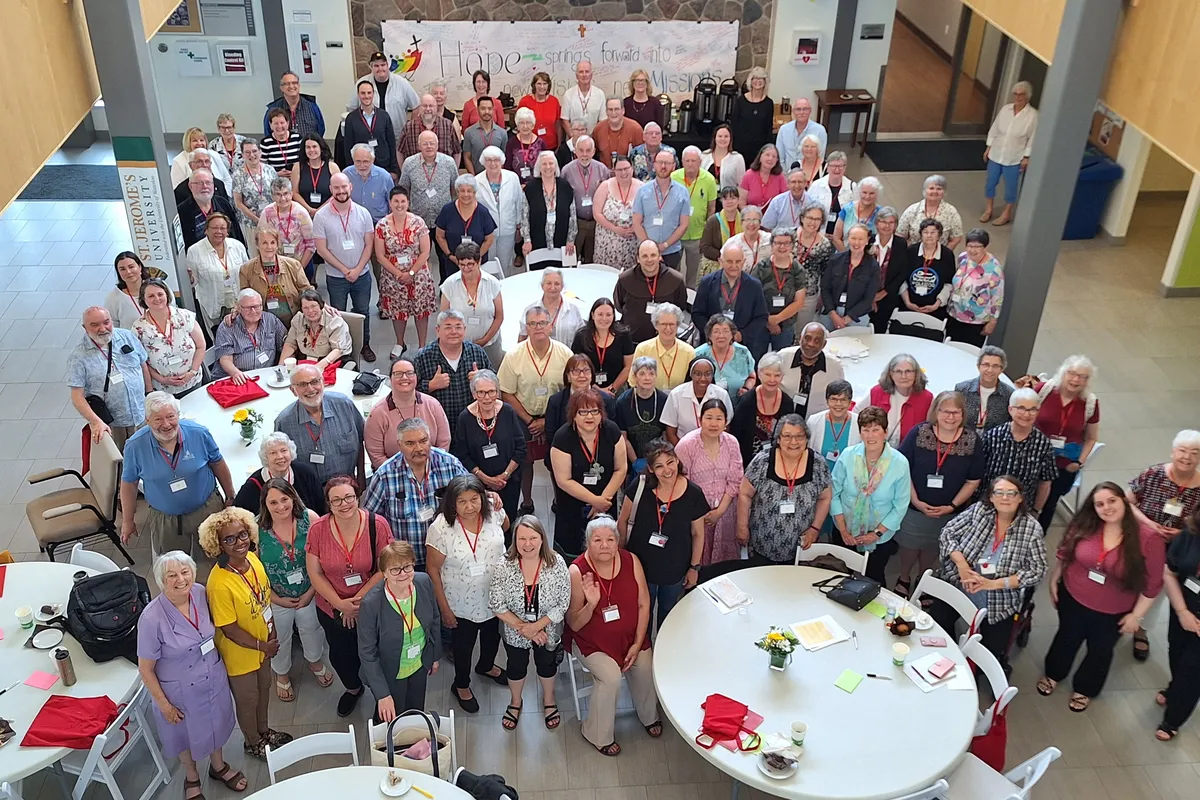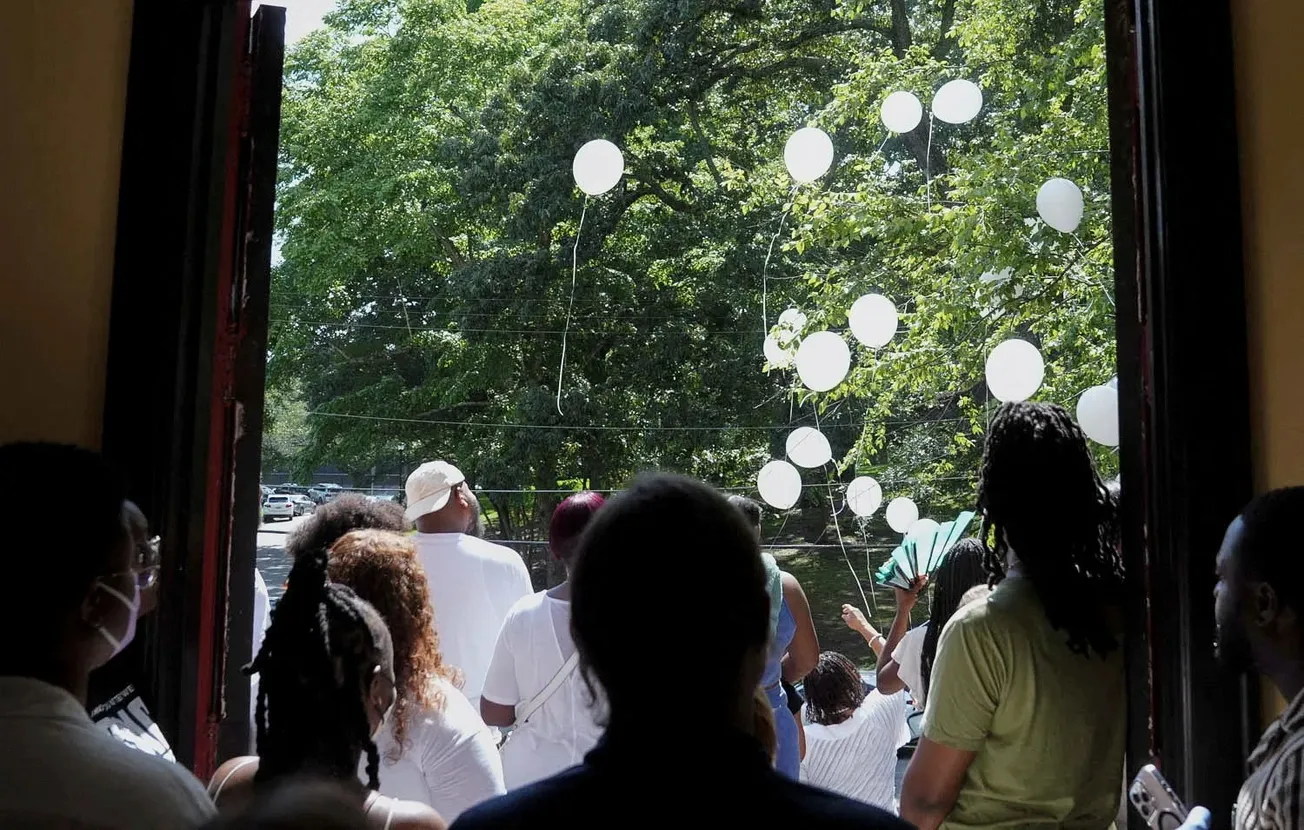“Our African-American ancestors knew the liberating hand of God. Even before emancipation they knew the inner spiritual freedom that comes from Jesus. Even under slavery they found ways to celebrate that spiritual freedom which God alone can give. They left us the lesson that without spiritual freedom we cannot fight for that broader freedom which is the right of all who are brothers and sisters in Christ.”
These prophetic words from the “first 10” U.S. Black Catholic bishops, in their historic 1984 pastoral letter “What We Have Seen and Heard,” resonate deeply today. It was a groundbreaking message for the American Church, but it raises a critical question: Have we truly seen and heard? If so, what have we seen and heard? Are we living in the freedom Christ offers, or are we still bound by interior chains that keep us from embracing this liberation within the Body of Christ?
The Urgency of the New Evangelization
Before we can experience true freedom, we must recognize the captivity of our hearts and minds. In many ways, this spiritual imprisonment is more insidious than any external oppression. We are often held captive by unseen forces—spiritual chains that bind us, but whose consequences are felt in the real world. This is why the New Evangelization is so urgent, especially in the urban settings of America.
Evangelization, at its core, is the proclamation of life and freedom in Jesus Christ and his Church. This is not a human strategy nor another diocesan plan, but a divine mission rooted in the love of the Father, the Son, and the Holy Spirit. It has its source, therefore, in the triune God. It is also relational. It’s about making connections with people, giving them the understanding that we are all in need, at some level, to receive God’s mercy and love and have him at the center of what we do and the way we live. Through the Gospel, we are offered true freedom, and the urban streets of America are the frontlines of this mission. The New Evangelization must focus on these areas where the fullness of the Gospel has yet to penetrate, bringing hope and transformation. Our urban settings have become the mission territory of today.
A Radical Call for Structural Change
For this mission to succeed, we need radical structural reform on both the parish and diocesan levels. Drawing from Fr Hans Urs von Balthasar’s “Christological form,” the Church must center all its actions on Christ. The preferential option for the poor is not just a moral directive but is deeply embedded in Christological faith. In the urban context, this means addressing both spiritual and material needs—often at the same time.
However, moving toward a radical structural reform does not mean we must forgo current canon law. Here, I think of the changes made within the Archdiocese of Detroit that we have called “Families of Parishes.” Priests are now placed in groupings, so that, as a team of priests, they solidify their call to be missionary agents. To practically implement this new structure, a deep fraternal conversion among both bishops and priests is essential. However, even with this change, it may not fully address the pressing realities we face. Further structural reforms are necessary to meet the evolving missionary needs of today.
Urban parishes know all too well that the Gospel cannot be preached without first meeting immediate human needs—giving food and clothing to those in need, offering showers, paying light and gas bills, and offering basic dignity to those most vulnerable. Pope Francis has exemplified this even in Vatican City. Before a parish in an urban setting can focus primarily on its sacramental role, as seen in other parochial settings, it must first embrace its vital position as a community-serving entity. In this regard, the Church in America can learn much from the Church in Africa, which has excelled over the past 50 years in both serving those in need and guiding them to the sacraments. One key reason for this success is the close cultural and personal connection between those offering service and those receiving it. Another is the African Church’s reliance on lay catechists to lead and sustain outpost missions.
While we have strong lay leadership in America, we need to reimagine our urban parishes—perhaps moving to just a few large central parishes, supported by numerous mission outposts led by lay leaders. This model would allow for more effective evangelization and service. To realize this vision, we must also rediscover the rich theology of Confirmation, recognizing its role in empowering the faithful to fully live out their Christian mission.
However, this mission of outreach cannot rest on a single parish. It must be embraced as a diocesan-wide effort. Trust between the bishop, priests, and laity is critical for structural change, alongside openness to genuine dialogue and collaboration. This means having honest, sometimes difficult conversations about the realities we face. Leaders at all levels must cultivate the gift of listening and entrusting responsibilities to one another. Therefore, radical structural reform is needed at the local diocesan curial level as well. Without such reform, fear and rigidity can easily hinder the Church’s evangelizing mission, both in parishes and across the diocese. True evangelization flows from personal conversion and the shared recognition—by curial officials, priests, and parishioners alike—that Jesus, not buildings or finances, is supreme.
Catholic Education in the Urban Setting
Since time immemorial, the Church’s apostolic mission has relied on the transmission of faith through education, particularly for the youth. Catholic schools have long been pillars of this mission, dating back to the great Father of the East, St. Basil the Great, and the Cappadocian Fathers St. Gregory of Nyssa and St. Gregory of Nazianzus. These early schools not only deepened students' understanding of the orthodox faith, but also equipped them with intellectual and moral formation, fostering reason and wisdom.
In our day, Catholic education continues to be a powerful source of evangelization, especially in urban settings. I am reminded of countless individuals in Detroit who have benefited from Catholic education. Their time spent in Catholic schools and parishes has shaped their future endeavors, forming them not just academically but spiritually to truly be at the service of the community. This is not to mention the many families who have come to embrace the fullness of the Christian faith through these schools. I’m reminded of the historic and prophetic words of Servant of God Thea Bowman to our U.S. bishops in 1989:
“For so many of us, being Black and Catholic means having come into the Church because education opened the door to evangelization.”
Within the Black Catholic community, Catholic schools have long been the first step toward evangelization. Therefore, keeping as many urban Catholic schools open as possible is a necessity within the overall mission of the Church. And not only keeping them open, but also opening more and having them become beacons and flourish within our communities.
Catholic Parishes in the Urban Setting
Across the United States and beyond, the call for parishes to move "from maintenance to mission" is frequently heard. However, this shift must extend to every aspect of Church life, particularly in urban settings where the mission to share the Gospel and reach those in need often begins with addressing basic human necessities. Urban parishes, more than others, serve as places of pre-evangelization—where the groundwork for faith is laid through acts of love and service. All who collaborate in the Church’s mission must understand this reality and respond accordingly.
Given these unique challenges, it’s time to reimagine parish life in urban America. Gone are the days when our immigrant European brothers and sisters built massive, cathedral-like churches designed to stand for eternity. Today, the upkeep of these buildings has become a heavy burden for pastors and parishioners alike. We should consider smaller, more flexible parish buildings, supported by multiple outpost mission centers that meet both the material and spiritual needs of the community.
Urban parishes must first attract through love, service, and authenticity, proclaiming the Gospel in a way that resonates with those they serve. As Pope Benedict XVI said, “The Church grows by attraction.” This is especially true for urban communities. Our lives must bear witness to the freedom we preach. But the question remains: Have we truly embraced that freedom ourselves?
Fr John M. McKenzie is a priest in solidum, serving the Archdiocese of Detroit within the D4 Mission Family of Parishes. He primarily serves at Christ the King Catholic Church and School. Prior to entering the seminary, he was a Benedictine monk in Italy.








